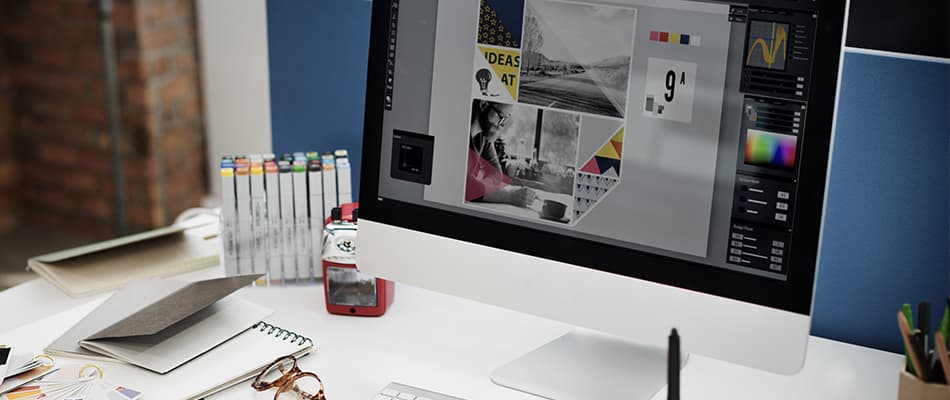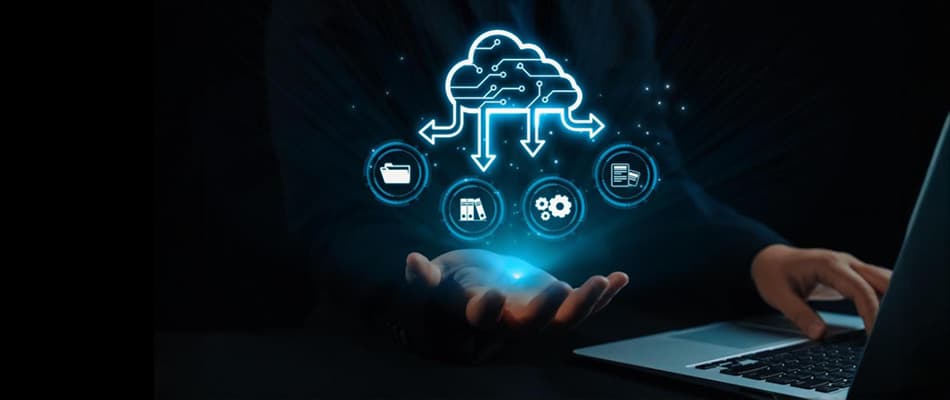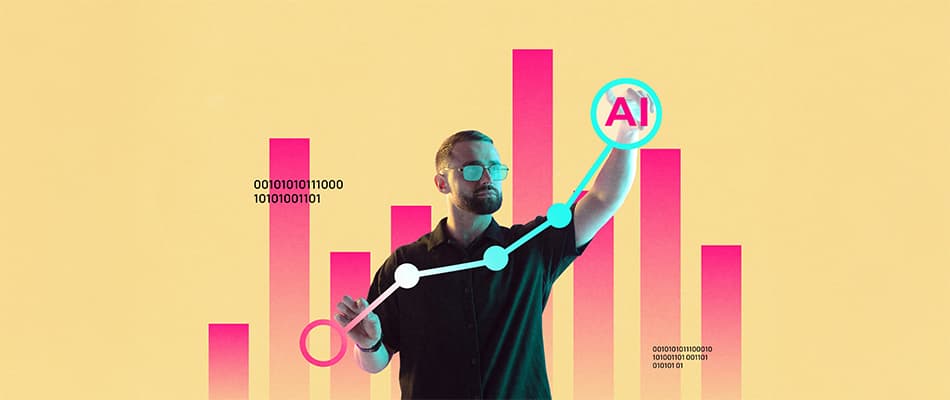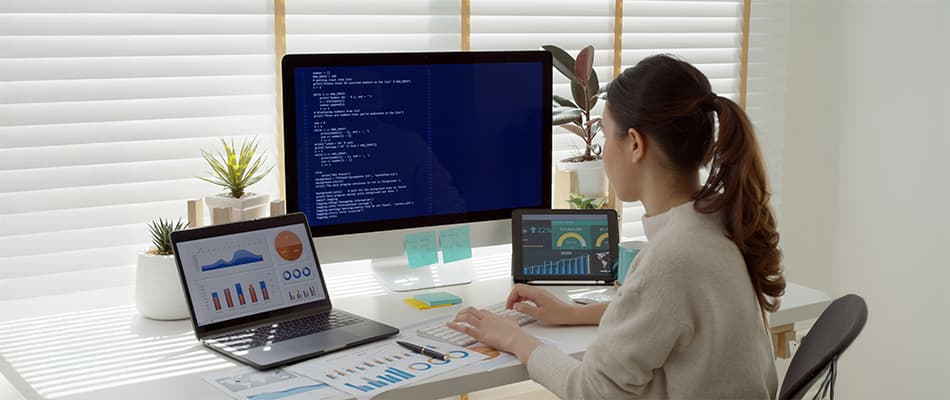What are the Different Graphic Design Styles? Explore Here!
Graphic design styles are the primary tools for creating visual messages. Each style has its way of showing ideas and telling stories. These styles can be simple, clean, bold, and detailed, fitting different needs and audiences. Knowing what are the different graphic design styles helps designers choose the best way to create strong and compelling visuals. By understanding the different styles, designers can tailor their work to fit a project’s tone, personality, and goals. From modern, minimalist approaches to vibrant, maximalist designs, each style communicates a unique message. The right style not only enhances the aesthetic appeal but also strengthens the message’s impact.
This article will explore popular design styles and their main features.
Top Graphic Design Styles
Graphic design includes many styles, each offering a unique way to share ideas and create visual art. These styles can range from simple and clean to bold and detailed. Understanding what are the different graphic design styles helps designers choose the right approach for their projects and audiences. This introduction explores popular design styles, highlighting their unique features and uses to provide a better understanding of the graphic design world.
Here are the types of various graphic design styles:
1. Minimalism
Minimalism in graphic design focuses on simplicity, using fewer elements to highlight the main message. This style is popular in branding, websites, and modern art due to its clean and professional look. By removing unnecessary details, minimalism helps viewers quickly understand the design’s purpose and focus on what’s most important. The result is a neat, clear, and impactful design that communicates its message without distractions. Minimalism makes it easy for viewers to engage and stay focused.
2. Maximalism
Maximalism is the opposite of minimalism. It uses bright colours, detailed patterns, and many visual elements. This style is about using more to create bold and busy designs. Maximalism is great for projects that need to stand out and make a strong statement. It is often used in ads, posters, and art to show creativity and personality. This style grabs attention and shares lots of information in one design, making it memorable and exciting.
3. Typographic
The typographic design focuses on using text as the main feature of a design. It arranges different fonts, sizes, and styles to make the text look creative and attractive. This style makes words look creative and fun, often seen in posters, logos, and ads. Typographic design is great for making a strong statement or sending a clear message without using many images. It’s an easy way to create eye-catching designs that focus on words. Careful planning is needed to make the text easy to read and look good.
4. Retro
Retro design takes ideas from past decades, such as the 50s, 60s, or 80s. It uses old-style colours, patterns, and fonts to create a nostalgic and memorable feel. This style adds a sense of history and charm, making it great for brands and projects that want to stand out. Retro design makes people feel connected by reminding them of the past. It is famous for branding, posters, and packaging to create a timeless and unique look.
5. Abstract
The abstract design uses shapes, colours, and lines to create art that doesn’t show real things. It focuses on feelings and imagination, allowing people to see and understand the design in their own way. This style is used in art, branding, and album covers, where creativity is considered more important. Abstract designs are unique and let people think differently, making them great for projects that want to show emotions or make viewers curious.
6. Geometric
The geometric design uses simple shapes like circles, squares, and triangles to make neat and eye-catching layouts. It often has patterns and balanced arrangements for a clean, modern feel. This style is popular in branding, product packaging, and digital designs because it looks simple and organised. Geometric designs can use bright colours to be noticed or neutral tones for a softer look, making them great for many different projects and messages.
7. Flat
Flat design is simple and uses two-dimensional elements without shading or textures. It uses solid colours, clean lines, and straightforward shapes to create easy-to-understand visuals. Flat design is popular for websites, apps, and icons because it looks modern and is easy to use. This style helps users interact with digital content easily and is known for being lightweight and fast to load on digital platforms. It keeps designs clear and user-friendly.
8. Three-Dimensional
The three-dimensional (3D) design makes images look real by adding depth with shadows, highlights, and perspective. This style makes visuals seem to pop out of the page or screen. 3D design is often used in animations, video games, and ads because it creates attractive and exciting content. It helps show complex ideas in a simple and fun way, making them easier to understand and remember. The 3D design makes projects stand out and hold attention.
9. Organic
Organic design is inspired by nature and uses soft lines, natural shapes, and gentle colours. It creates a relaxed and welcoming look for eco-friendly brands, wellness products, and calming art. This style has flowing, uneven elements that make it warm and human. Unlike strict, geometric styles, organic design looks natural and soothing. It helps people feel comfortable and connected to nature, making it great for projects that want to feel peaceful and balanced.
10. Modern
Modern design is all about keeping things clean and simple. It uses open spaces, clear lines, and modern elements to create a balanced look that is both stylish and practical. This design style is popular in corporate branding, websites, and product packaging because it looks fresh and professional. Modern design follows current trends, making it flexible for many projects. It often uses bold, easy-to-read fonts and simple colour schemes to appeal to many people.
11. Corporate
Corporate design helps businesses look professional and trustworthy. It uses simple colours, clear fonts, and organised layouts to create a serious and reliable image. This style is often seen in company logos, brochures, and presentations. The goal is to balance creativity with a formal look so the message is clear and appealing to clients and partners. Corporate design builds a strong, consistent brand image that shows confidence and professionalism.
12. Illustrated
Illustrated design uses hand-drawn or digital art to add a personal touch to projects. This style is more prominent in children’s books, fun ads, and posters because it makes them more exciting and playful. Illustrated designs can be simple or detailed, depending on the project’s needs. This style adds creativity and helps the design stand out. It connects with people personally, making the design more engaging and memorable.
13. Playful
If you want to know what are the different graphic design styles, then knowing playful design can prove to be helpful. The playful design is perfect for energetic visuals. It creates energetic visuals using bright colours, fun fonts, and creative shapes. It is common in designs for children’s products, entertainment, and fun marketing materials. This style quickly grabs attention and makes people feel happy. The playful design breaks traditional design rules, adding bold and imaginative details. It makes projects more fun and exciting, perfect for things that need to be friendly and cheerful. It encourages creativity and makes designs stand out.
14. Feminine
Feminine design uses soft and gentle details to look pretty and welcoming. It has soft colours like pastels, elegant fonts, and delicate patterns. Flowers and flowing lines are common in this style, making it warm and friendly. When exploring what are the different graphic design styles, feminine design stands out for its use in fashion, beauty, and lifestyle brands. It looks stylish but also feels relaxed and inviting. Feminine design is defined as being elegant and connecting with people gently.
15. Masculine
Masculine design is strong and bold, using darker or earthy colours and solid, simple fonts. It has sharp lines and sometimes rough textures to show power and strength. This style is common in branding for sports gear, tools, and cars where toughness is important. Masculine design is excellent for sending a message of confidence and reliability. It’s simple and direct, making projects look powerful and dependable.
16. Grunge
When understanding what are the different graphic design styles, one should also explore the grunge style. Grunge design is a bold style that moves away from clean and polished design rules. It uses rough textures, splatters, torn edges, and worn-out effects to create a messy, unrefined look. This style often features dark colours, layered images, and rough fonts, perfect for showing a raw and natural feel. Grunge design is typical in music posters, streetwear branding, and alternative magazines, appealing to those who appreciate unique and expressive art. The goal is to create strong emotions and stand out.
17. Photorealism
Photorealism is a style that makes art look as natural as a photograph. It uses detailed work, shading, and colour mixing to make images look lifelike. Artists use special techniques and digital tools to show textures, light, and shadows realistically. Photorealism is often used in movie posters, video games, art and ads to show products clearly. This style takes a lot of time and skill because every tiny detail is carefully drawn to make the picture look genuine and impressive.
Read more on how to become a UI designer here.
Learn Graphic Design with Digital Regenesys
Enrolling in the UI/UX and Graphic Design Course with GenAI at Digital Regenesys is an excellent way to develop essential skills and gain hands-on experience. This course gives you the tools to create visually appealing designs while teaching you the basics of graphic design and user experience. Once you’ve completed the course, you might also want to explore what are the different graphic design styles to expand your knowledge and help you create even more creative and impactful designs. This will support your growth as a designer and help you build a successful career.
Here are the benefits of considering this course at Digital Regenesys:
- Expert Training – Learn from experienced instructors who share practical tips and real-world insights, making complex topics easy to grasp.
- Hands-On Projects – Engage in real projects that provide valuable experience and help you build a solid portfolio for future job opportunities.
- Up-to-date Curriculum -The course covers the latest tools and trends in UI design, ensuring you stay relevant in the field.
- Online Learning – Enjoy the convenience of online learning, which allows you to study at your own pace and fit your education into your schedule.
Thus, choosing the right graphic design style makes your project better and more enjoyable. Each style is unique, whether you want a simple look, a fun feel, or a bold design. Understanding what are the different graphic design styles helps designers make good choices and create work that stands out. The best style fits your project and connects with your audience. Consider enrolling in the UI/UX and Graphic Design Course at Digital Regenesys to learn more and improve your skills.
What are the Different Graphic Design Styles? – FAQs
What are the different graphic design styles?
There are many graphic design styles, such as minimalism, maximalism, typography, retro, abstract, geometric, flat, 3D, organic, modern, corporate, illustrated, playful, feminine, masculine, grunge, and photorealism. Each style is unique and works best for different types of projects.
Where is minimalism most commonly used in graphic design?
Minimalism is often used in branding, websites, and modern art because it looks clean and professional. By removing extra details, minimalism focuses on the main message.
What makes the retro design unique?
Retro design uses colours, patterns, and fonts from old times, such as the 1950s or 1980s. It is nostalgic and popular for branding, posters, and packaging.
Why is photorealism used in advertising?
Photorealism is used in ads to make products look real and detailed, helping people see and understand them better.
How does feminine design create a welcoming look?
To create a warm and friendly look, the feminine design uses soft colours, pretty fonts, and gentle patterns, often with flowers and flowing lines.














